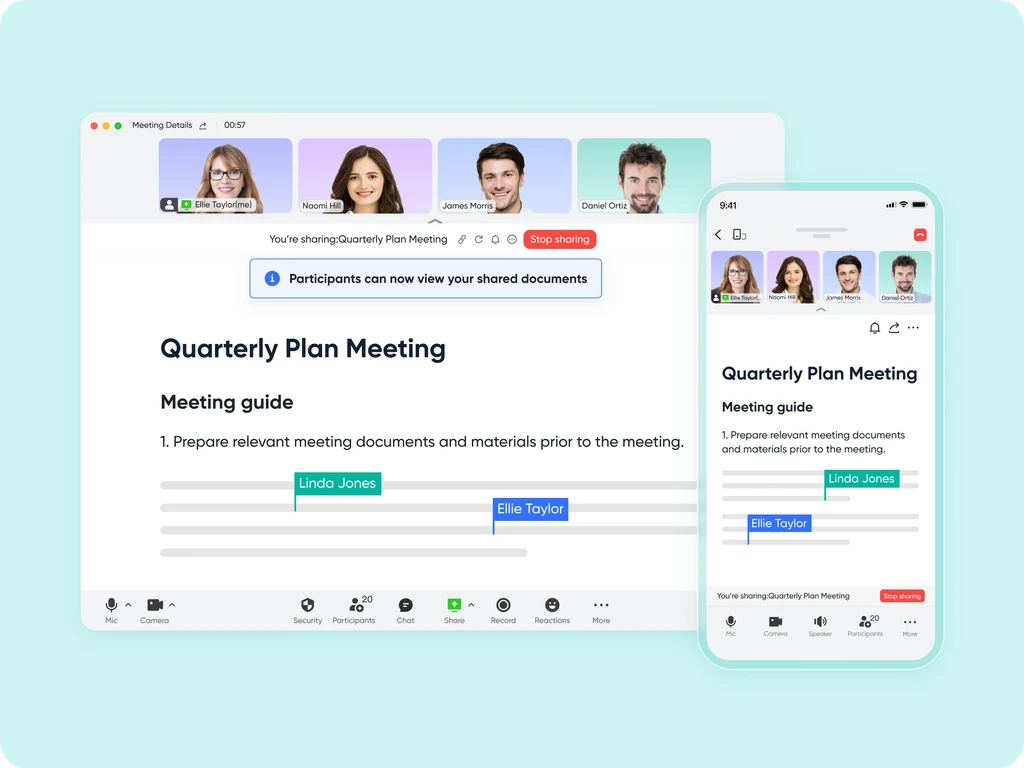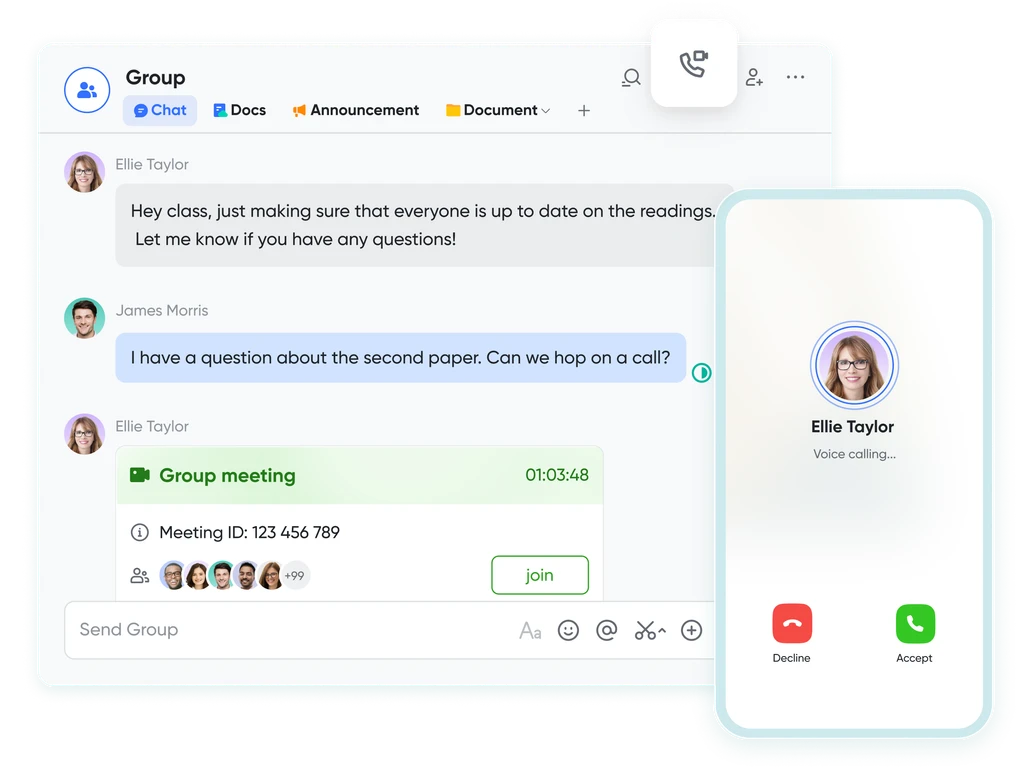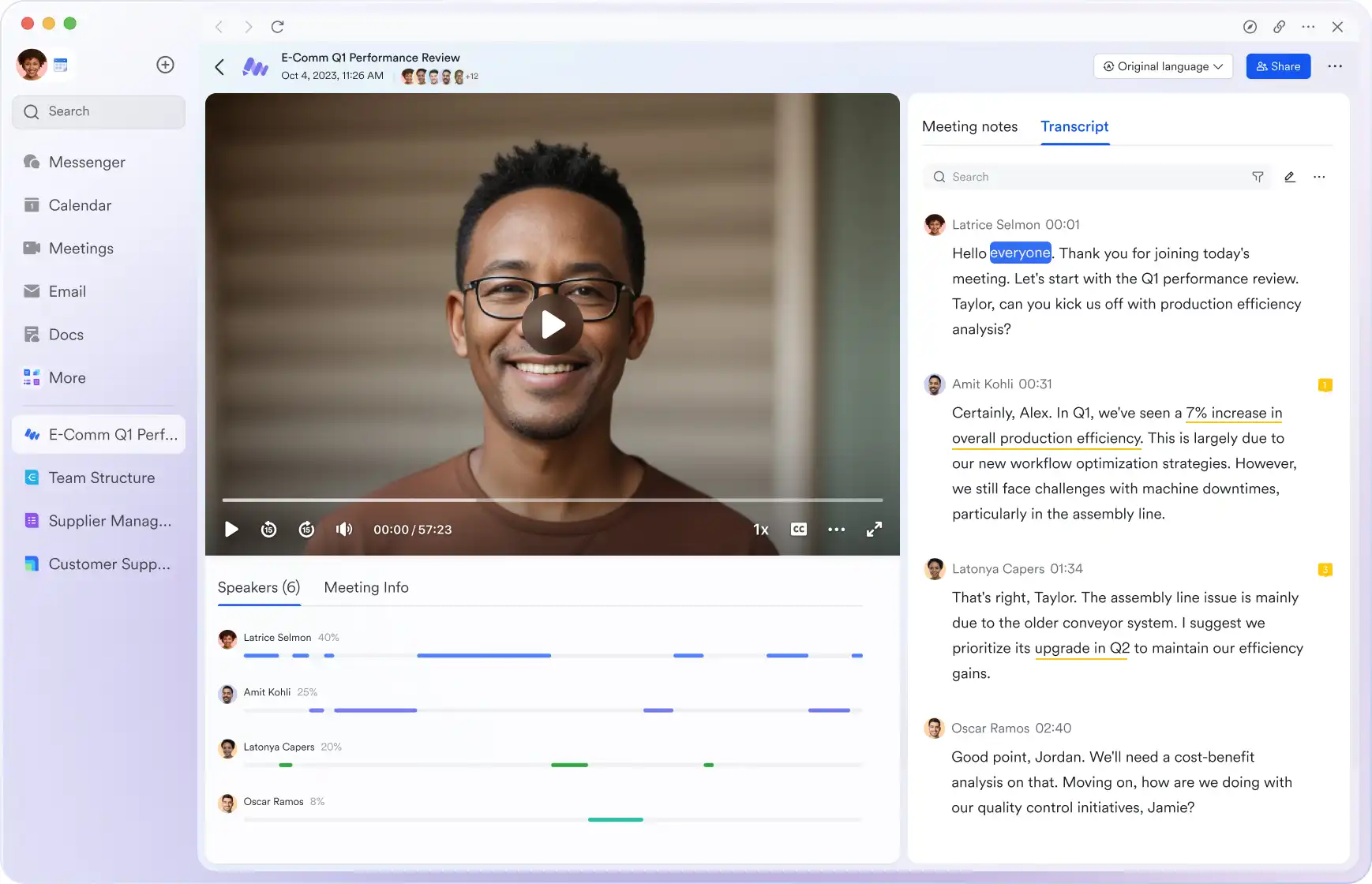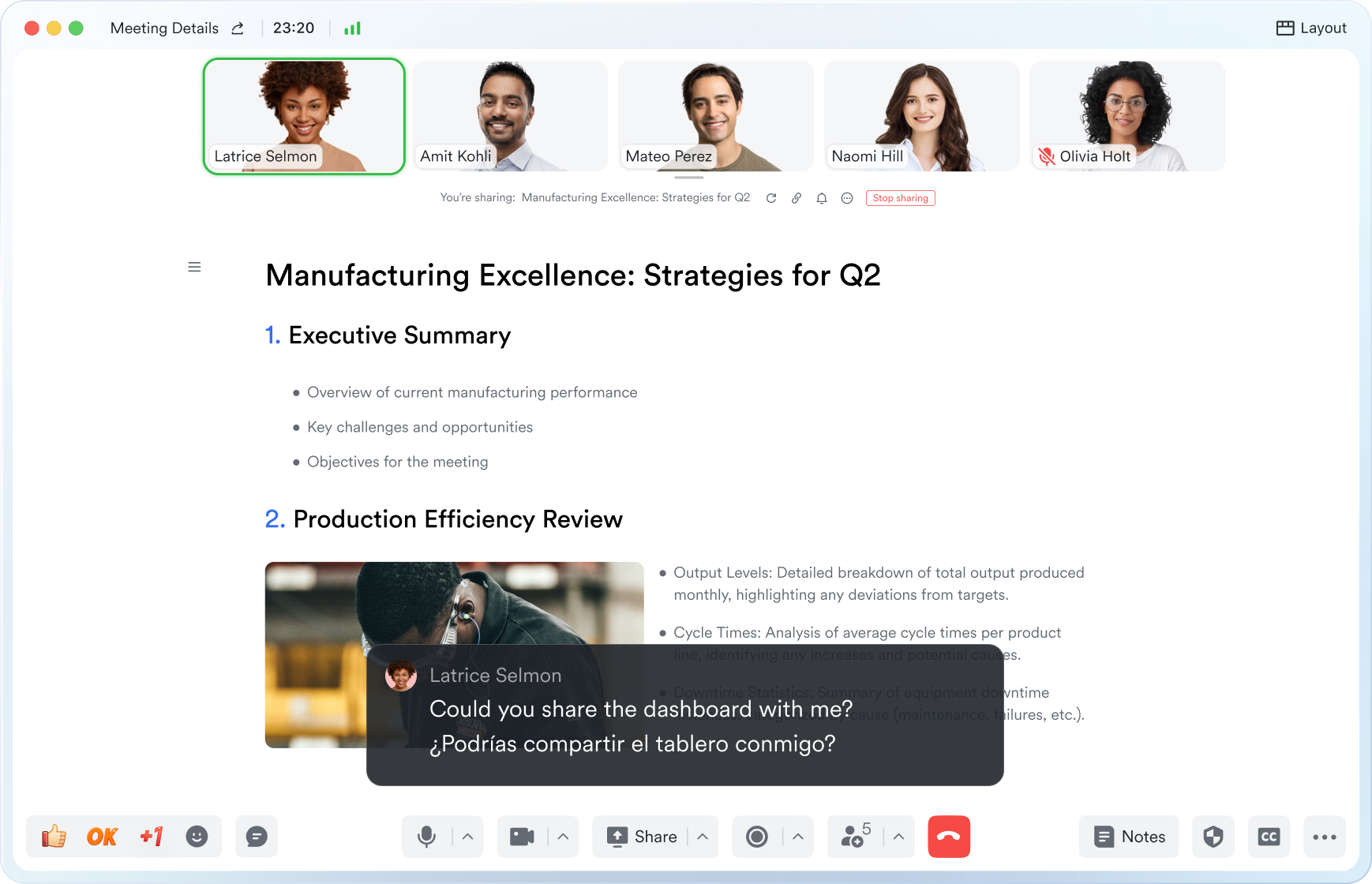Supplier Meeting
This guide will walk you through the essential elements of use supplier meeting to keep your attendees aligned and engaged.
Try Lark for Free
In today's fast-paced and interconnected business landscape, supplier meetings play a pivotal role in nurturing collaborative relationships, driving operational efficiency, and achieving strategic objectives. As the year 2024 unfolds, the dynamics of supplier meetings have evolved, demanding a fresh approach to ensure their effectiveness in facilitating productive and sustainable partnerships. In this comprehensive guide, we will delve into the essentials of running successful supplier meetings, covering everything from their core objectives to the key best practices and potential pitfalls to avoid.
Use Lark Meetings to turn meetings into true collaborative experiences.
What is a supplier meeting?
A supplier meeting serves as a platform for organizations to engage with their suppliers, fostering open communication and collaboration to facilitate the smooth flow of goods, services, and information. These meetings are instrumental in aligning expectations, discussing performance metrics, addressing challenges, and exploring opportunities for mutual growth and success.
Goals of a supplier meeting
The primary goals of a supplier meeting include enhancing transparency in the supply chain, strengthening relationships with key suppliers, fostering innovation through open dialogue, discussing quality and performance improvements, and ensuring the alignment of objectives between the buying organization and its suppliers.
Who should attend a supplier meeting?
Key stakeholders who should participate in a supplier meeting typically include procurement and supply chain professionals, representatives from the supplier's management team, quality assurance personnel, and individuals responsible for inventory management and demand planning. Depending on the agenda, finance and legal personnel may also be required to attend, especially for strategic discussions and contract negotiations.
Related:
Master the Art of Meeting Notes with Lark for Enhanced Collaboration | Lark Blog | Lark BlogLearn more about Lark x Meetings
Topics, agenda, and structure of a supplier meeting
Structuring a Productive Agenda
The agenda of a supplier meeting should be carefully crafted to address critical topics such as performance reviews, quality control, demand forecasting, innovation exploration, cost-saving initiatives, and strategic partnership opportunities. Allocating sufficient time for each item on the agenda is crucial to ensure that all relevant discussions receive the attention they deserve.
Setting the Meeting Structure
The meeting structure dictates the flow of discussions and the allocation of time for each agenda item. It's essential to establish a balance that allows for detailed conversations while maintaining overall meeting efficiency. Opening with a brief overview, setting clear objectives, and concluding with action items and next steps are integral aspects of a well-structured supplier meeting.
Learn more about Lark x Meetings
How often does a supplier meeting occur?
The frequency of supplier meetings varies based on the nature of the relationship and the prevailing business environment. Strategic supplier reviews may occur annually, while operational and performance meetings may take place on a monthly or quarterly basis, ensuring a balance between frequent updates and strategic alignment.
Key differences between a supplier meeting and another similar meeting
A supplier meeting differs from other types of meetings, such as internal team meetings or client meetings, primarily in its focus on vendor performance, supply chain dynamics, and strategic alignment with external partners. Unlike internal meetings, supplier meetings involve negotiating contracts, discussing SKU performance, and analyzing market trends and competitive landscapes.
Learn more about Lark x Meetings
Three practical examples of supplier meetings
Example 1: annual strategic supplier review meeting
Example 1: annual strategic supplier review meeting
The annual strategic supplier review meeting serves as a platform to evaluate the long-term partnership vision, assess supplier capabilities, and explore collaborative growth opportunities. It typically involves in-depth discussions on market trends, technology advancements, and joint investment strategies.
Example 2: quarterly performance review meeting
Example 2: quarterly performance review meeting
Quarterly performance review meetings are geared towards monitoring supplier KPIs, evaluating delivery and quality metrics, and identifying potential areas of improvement in the supplier's offerings. These meetings often lead to actionable performance improvement plans and mutually beneficial process optimizations.
Example 3: new product development collaboration meeting
Example 3: new product development collaboration meeting
Meetings focused on new product development underscore the importance of innovation and collaboration. These sessions entail discussing product specifications, testing requirements, and production timelines, fostering a creative and mutually beneficial environment for product launches.
Common pitfalls of a supplier meeting
Navigating through supplier meetings can present various challenges that, if left unaddressed, may impede the effective realization of meeting objectives. Some common pitfalls include inadequate preparation, one-sided communication, lack of follow-up, unclear action items, and neglect of supplier feedback.
Learn more about Lark x Meetings
Dos and don'ts of a supplier meeting
| Do's | Don'ts |
|---|---|
| Prepare an agenda | Don't allow distractions during the meeting |
| Encourage dialogue and open discussion | Avoid monopolizing the conversation |
| Acknowledge contributions | Don't dismiss alternate perspectives |
| Follow up promptly with actionable items | Avoid ambiguous action items |
| Build a collaborative environment | Don't overlook feedback from suppliers |
What makes a virtual supplier meeting successful?
Virtual supplier meetings require meticulous planning and execution to ensure seamless communication and uphold meeting objectives. Incorporating interactive tools, using high-quality video and audio technology, and implementing collaborative digital platforms are crucial for virtual meeting success, fostering active engagement and meaningful interactions.
Learn more about Lark x Meetings
Typical takeaways of the supplier meeting
The typical takeaways from a supplier meeting encompass key insights, actionable strategies, performance improvement plans, strategic alignment initiatives, updated contracts or agreements, and a clear roadmap for ongoing collaboration. These takeaways are instrumental in driving mutual growth and fostering long-term partnerships.
Questions to ask in a supplier meeting
Engaging in meaningful discussions with suppliers involves asking insightful questions that generate valuable insights and drive productive outcomes. Some pertinent questions to consider include:
- What are the main challenges your organization faces in the current supply chain landscape?
- How can we collaboratively optimize our logistical operations to enhance efficiency and reduce costs?
- What technological advancements do you foresee impacting our industry, and how can we prepare to leverage them effectively?
Learn more about Lark x Meetings
Conclusion
Elevating the efficacy of supplier meetings is paramount in establishing enduring partnerships and driving operational excellence. By adopting a strategic and collaborative approach, organizations can maximize the value derived from these meetings, fostering innovation, optimizing supply chain dynamics, and setting the stage for sustainable growth and success.
Use Lark Meetings to turn meetings into true collaborative experiences.
A Game Changer for Supplier Meeting: Empower your team with Lark Meetings
In the fast-paced and dynamic world of modern business, effective communication and collaboration are crucial for success of Supplier Meeting. Here we introduce Lark Meetings to serve as a centralized hub for all communication needs.
Transform your meetings into collaborative endeavors

Leverage the potency of in-call document sharing, intelligent meeting minutes, and mobile-optimized features to enhance productivity collaboratively, irrespective of your location or schedule.
Seamlessly collaborate in real-time, across any device

Share live documents instead of just screen views. Participants can navigate and edit simultaneously within the video call window, even while on the move.
Shift your focus to engagement, not note-taking

Lark Minutes automatically converts video meetings into transcripts, facilitating easy viewing, searching, and collaborative editing. Stay in the loop asynchronously, even if you can't attend the live meeting. Lark Minutes for meeting minutes support translation into 10+ different languages.
Break language barriers in communication

Lark Meetings provide real-time translation for subtitles, allowing individuals from diverse backgrounds to express themselves in their native languages. Ensure every voice is heard, regardless of geographical location. Live subtitles currently support translations from English, Chinese, and Japanese to 10+ different languages. See more translation feature in Lark.
Connect with larger audiences
Host dynamic online meetings and events accommodating up to 1,000 participants, with the flexibility of up to 50 breakout sessions for intimate group discussions within the larger meeting context. Try more Lark features for free.








